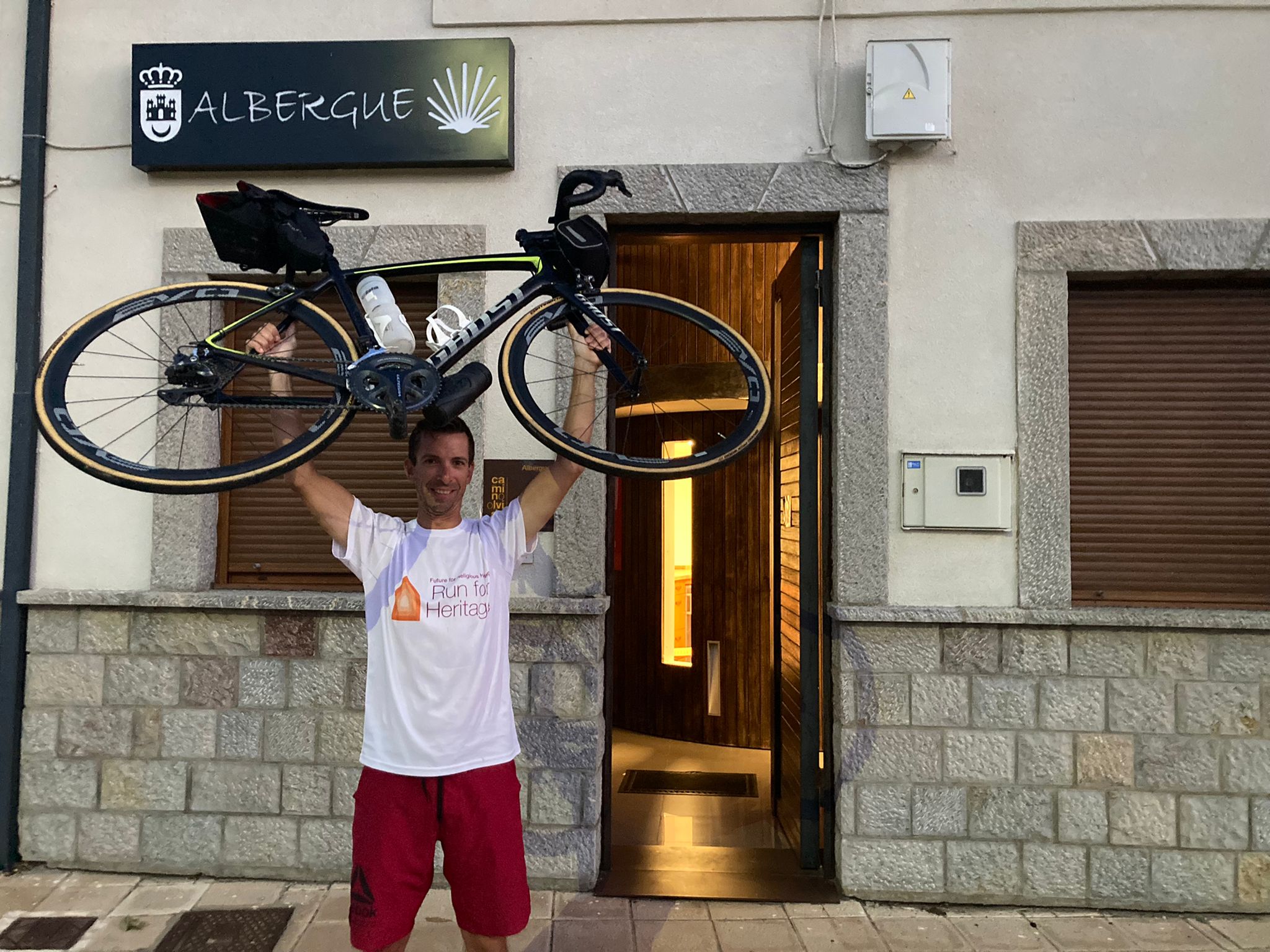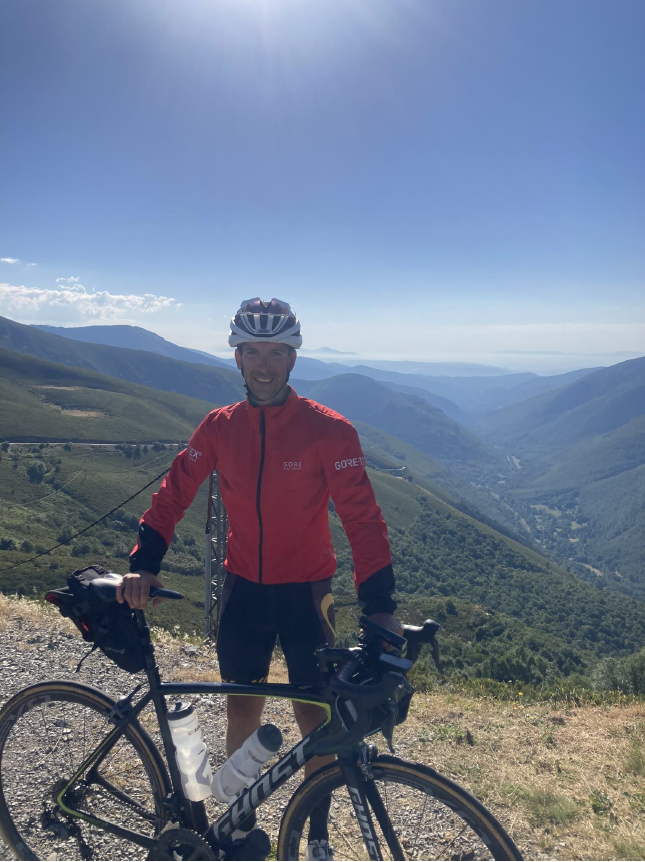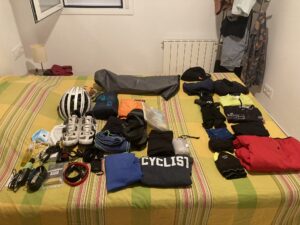
My bike and me early in the morning at Albergue de Peregrinos Canales- La Magdalena, part of the “Camino Olvidado”, in León.
Albert is a young engineer from Barcelona whose passion for cycling led him to take on the challenge of travelling the Way of Saint James on two wheels. His journey began in the city of Santander, a stopping point on the Northern Way (Camino del Norte). After arriving in the village of Potes, he reconsidered his route and continued along the so-called Forgotten Way (Camino Olvidado), which is perhaps one of the most overlooked routes leading to Santiago de Compostela. Although he is not a professional in the world of fitness, in the coming days he will share a handful of useful tips for those looking to pedal Spain’s most famous pilgrimage and those simply curious about it.
About Albert
Hello, my name is Albert. I am a software engineer for money and a cyclist for fun. Born and bred in Barcelona, I began my cycling career as an urban cyclist and moved towards road cycling, focusing my interests on longer rides (randonneuring). I ride about 20,000km per year, mostly alone but I always enjoy the company of others.
Disclaimer.
I am not a coach nor a sport scientist. These are my views based on my own experience after thousands of kilometres on a bike. What works for me may not work for you. There are multiple factors that can affect the outcome including genetic conditions, fitness level, mental strength, etc.
Bike set up
I have used a road race bike fitted with a “bike-packing setup.” I like to travel very light, so I have used a small 3L handlebar bag for food and a 12L saddlebag for all the other things. Always carry a bungee cord so you can also stack things that need to be at hand like more food or a rain jacket. Three bottle cages were installed on the bike frame, two for 1L water bottles and one for the bike tool bottle. Remember to always mount charged front and rear lights; even if you do not travel at night you will find non-illuminated tunnels and low visibility conditions like fog.
I carry two sets of clothes, one for cycling and one for “off-bike” activities. The cycling clothes and underwear are washed and dried every day; the other set is only used for resting after a shower so it can last days without cleaning. Take into account that weather conditions can be very challenging even in summer, so bring warm and rain clothes like a jacket, gloves, kerchief, toe caps, etc. The “off-bike” kit includes a pair of sandals, your feet will thank you!
In summer, a full sleeping bag is not necessary, just a sleeping liner is enough. When packed, they are very small and light. In case you found cold conditions, just put on all your warm clothes! Always carry a space blanket in case of emergency! In addition, bring your own medicines, toilet kit and small microfiber towel.
Clothes and equipment to cycle the Way of St James.
Nutrition
I usually ride about 150km per day with an accumulated elevation gain of up to 3000 meters. You need a lot of energy! My calculations indicate that you can burn between 3,000 and 4,000 calories just pedaling. So eat, eat and eat more! I prefer normal food rather than energy bars and gels but that is up to you and your stomach. I start with a generous breakfast and while pedalling I alternate between sugary and salty food at a 1-hour rate approx. Also, remember to drink a lot of water. You can get dehydrated very easily. After riding, I enjoy a pleasant supper with vegetables, protein and carbs to refill all the energy tanks. Avoid copious meals while riding, it will be difficult to keep pedalling.
The Route
One of the beauties of the “Camino” is the multiple choices it offers. Almost every Spanish village claims they have a piece of the “Camino” crossing it! Plan according to your setup and abilities.
Conclusion
In my opinion, the appeal of the “Camino” is not about the destination but the journey. Enjoy the spectacular natural surroundings, the patrimony build by our ancestors and the people you meet!

Me with Valle de Ancares (Ancares Valley) in the background.






Follow us: